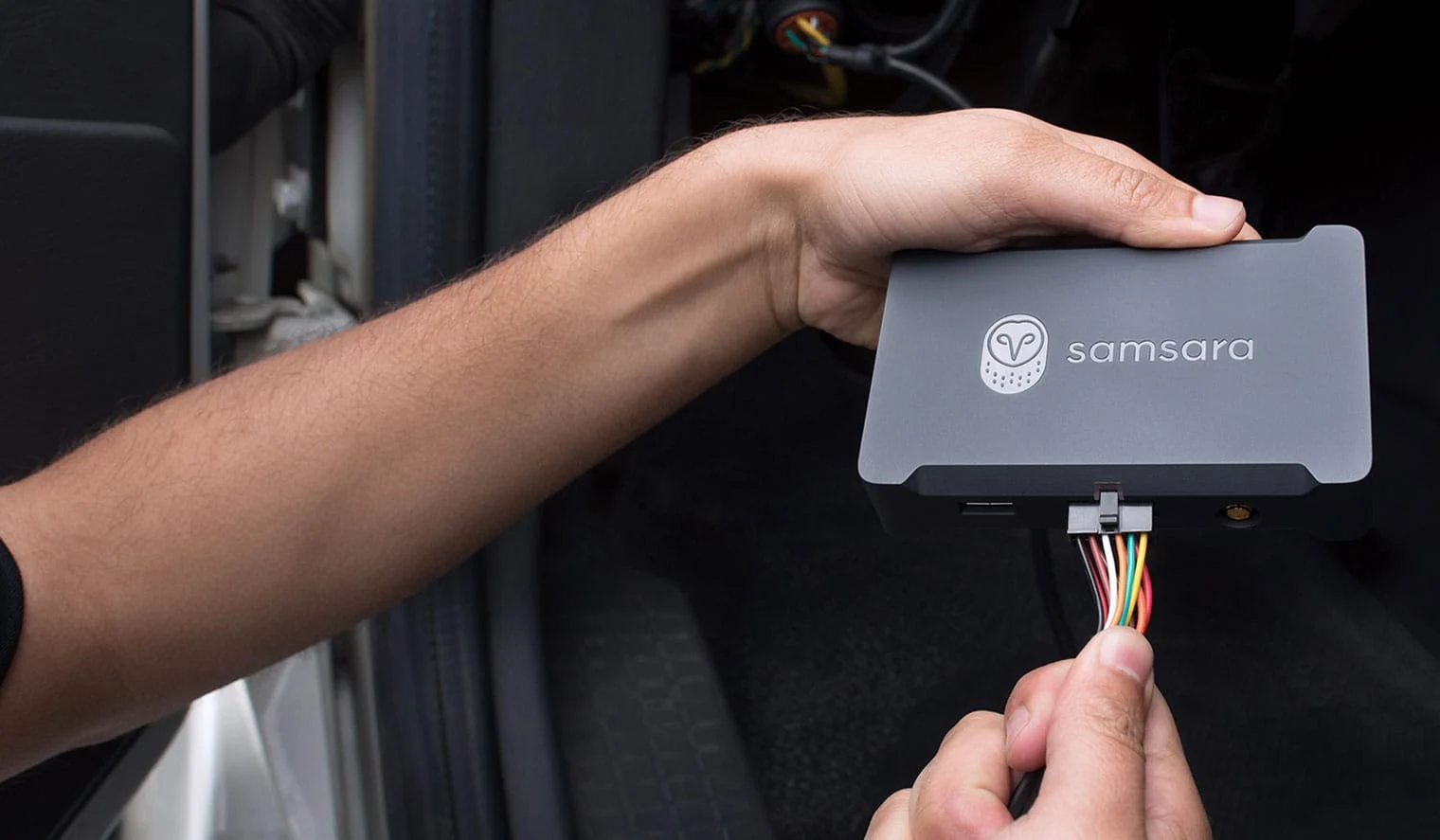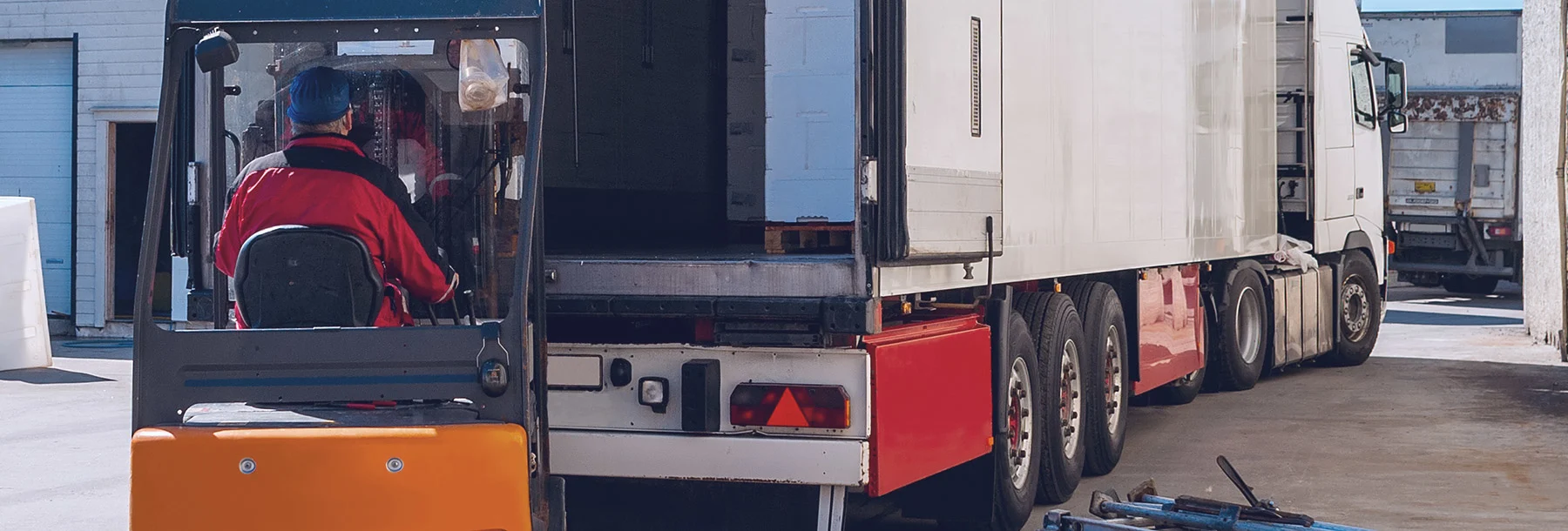Efficiency
4 key challenges that define the season: How connected fleets stay resilient through Canadian winters
November 23, 2025
Sr. Content Marketing Manager - Canada

Get the latest from Samsara
Subscribe nowAcross Canada, winter transforms how work gets done. Construction crews shift from paving to snow clearing. Landscaping teams trade mowers for plows. Forestry, transportation, and other essential operations adjust routes, schedules, and safety protocols to manage shorter days, freezing temperatures, and unpredictable weather.
No matter the industry, the long and demanding Canadian winter tests every team’s ability to stay prepared, connected, and safe—all while maintaining productivity in challenging conditions. The organizations that thrive are those that plan ahead, communicate clearly, and rely on real-time information to adapt as conditions evolve.
1. Preparing for the freeze: Reinforcing operational readiness
As temperatures drop, fleets across the country move into preparation mode. Maintenance and operations teams are reviewing vehicles, equipment, and schedules to ensure everything is ready for months of cold-weather work. This early planning helps minimize downtime, control costs, and keep crews productive as conditions change.
Fleets are using telematics to monitor vehicle health in real time and address issues before they disrupt operations. With live diagnostics and maintenance data, managers identify potential issues—such as low battery voltage or engine faults—before they cause costly repairs.
Through connected tools like Samsara Maintenance, work orders are automatically generated from fault alerts, service histories are tracked, and maintenance schedules are coordinated across the fleet. These connected workflows help teams prioritize repairs, plan preventive maintenance, and ensure trucks and service vehicles are winterized on time.
Beyond vehicles, fleets are also focusing on heavy equipment. With Equipment Tracking, powered by Asset Gateways and small, ruggedized Asset Tag, teams maintain visibility into graders, skid steers, trailers, and attachments across every site, even in remote areas. Teams then determine which assets can be stored for the season—verifying their condition before storage, redeploying underused machines, and scheduling service for high-use equipment ahead of winter peaks.
“Having all our data within a single platform like Samsara makes it much easier to see what equipment is at each location. Real-time tracking is a massive asset, and knowing where everything is at any given moment is a major improvement over other platforms that can lag behind.”
— Matthew Neziol, Safety Coordinator at Bayview Construction
2. Managing the storm: Maintaining visibility and connection
When the first storms arrive, fleets shift from preparation to coordination. Roads close, weather changes by the hour, and crews often work far from their dispatch centres. In these moments, operations teams rely on live data and constant communication to stay ahead of changing conditions and keep service on schedule.
Using Fleet Telematics, dispatchers monitor vehicle locations and progress in real time—seeing which routes are open, which jobs are complete, and where additional support may be needed. When conditions change—whether snowplows encounter blocked roads in the city or trucks in the north face sudden closures along the Dempster Highway—dispatchers can reroute crews within minutes to keep operations moving.
To anticipate challenges, fleets are layering in Weather Intelligence to visualize snow, wind, and temperature patterns directly on the map. They’re also using StreetSense to view live road surface conditions, drawing on the vast Samsara network to identify hazards even in areas without active vehicles.
In the field, teams stay connected through apps like Samsara Driver, avoiding radio traffic and fragmented updates. Route updates, shift details, and job instructions are delivered directly to mobile devices, ensuring everyone stays aligned. The app also supports digital inspections (such as DVIRs) and forms, reducing paperwork and helping maintain compliance throughout demanding winter operations.
"Samsara and our dispatch system talk to each other in every aspect. Drivers receive route info directly in the app, complete tasks, and send updates that flow right back to dispatch—automatically. It’s made our lives much easier.”
— Darryl Brown, Director of Business Improvement at TEAMS Transport
3. Working the long shift: Keeping safety at the forefront
Winter brings longer hours, darker days, and tougher driving conditions. Reduced visibility, fatigue, and icy roads increase the pressure on operators, making safety a top priority for those working through the season.
Fleets are using AI Dash Cams to make safety part of every shift. Cameras automatically detect risky behaviours—such as rolling stops, tailgating, or harsh braking—and issue in-cab alerts that allow drivers to correct themselves immediately. This real-time feedback helps prevent incidents and reinforce safer habits over time.
To combat fatigue, fleets are also leveraging Drowsiness Detection to identify early signs of tired driving—like prolonged eye closure or head nodding—and send alerts to both drivers and supervisors. This early intervention adds an extra layer of protection during long winter shifts, when fatigue is most common.
If incidents occur, video footage uploads automatically for review. Through the Safety Dashboard, managers can quickly see what happened, identify contributing factors, and coach drivers using real-world examples. Over time, these insights help fleets track progress and strengthen a safety culture built on awareness, accountability, and care.
Using the dual-facing cameras, we’ve learned a lot about how our drivers drive and have been able to make a lot of improvements. They also help when we do have an incident—like hitting a deer or something like that—because they take a lot of the guesswork out of the investigation and make our jobs easier.
— Ray Caddy, Director, Heath, Safety & Environment at CES Energy Solutions
4. Proving the work: Strengthening customer service and streamlining compliance
Throughout the winter season, fleets are balancing continuous operations with increasing customer expectations. These customers, municipal partners, and regulators expect timely updates and verifiable proof that work is completed safely, efficiently, and on schedule.
To meet those expectations, fleets tasked with snow removal are using Materials Spreaders with integrated sensors and GPS tracking to automatically log plow and spreader activity as it happens. Each route is time-stamped for full traceability, providing clear, verifiable records of when and where work was performed. The system also tracks application rates and coverage, giving customers confidence that materials are applied accurately and resources are used responsibly.
Fleets across the country are also turning proof-of-service reporting into a customer-service tool. Verified reports can be shared within minutes, showing exactly when and where service was completed. This transparency builds trust, reduces follow-up requests, and helps customers make informed decisions as weather changes.
Behind the scenes, compliance remains consistent across every shift. Through the Samsara Driver App, operators complete digital inspections before and after jobs to ensure vehicles and attachments remain safe and road-ready. Automated Hours of Service (HOS) tracking keeps operations aligned with regulations and reduces paperwork, allowing crews to stay focused on delivering timely, high-quality service.
“We were able to take our HOS and the digital form of our payroll sheet and put the two together to easily verify drivers’ information—all via the Driver App.”
— Stephanie McEachern, Sr. Analyst, Transport Maintenance at Loblaw Companies Ltd.
Building resilience through the season and beyond
From the West Coast to the Maritimes, winter puts every operation to the test. Connected operations help fleets turn those challenges into strengths. By uniting data from vehicles, equipment, and field teams in one platform, leaders can act faster, improve safety, and keep work moving through any condition.
Ready to take your winter operations to the next level? Schedule a demo to see how connected operations can drive real impact—or log in to unlock more value from your existing Samsara platform.
Get a demoGet the latest from Samsara
Subscribe now















